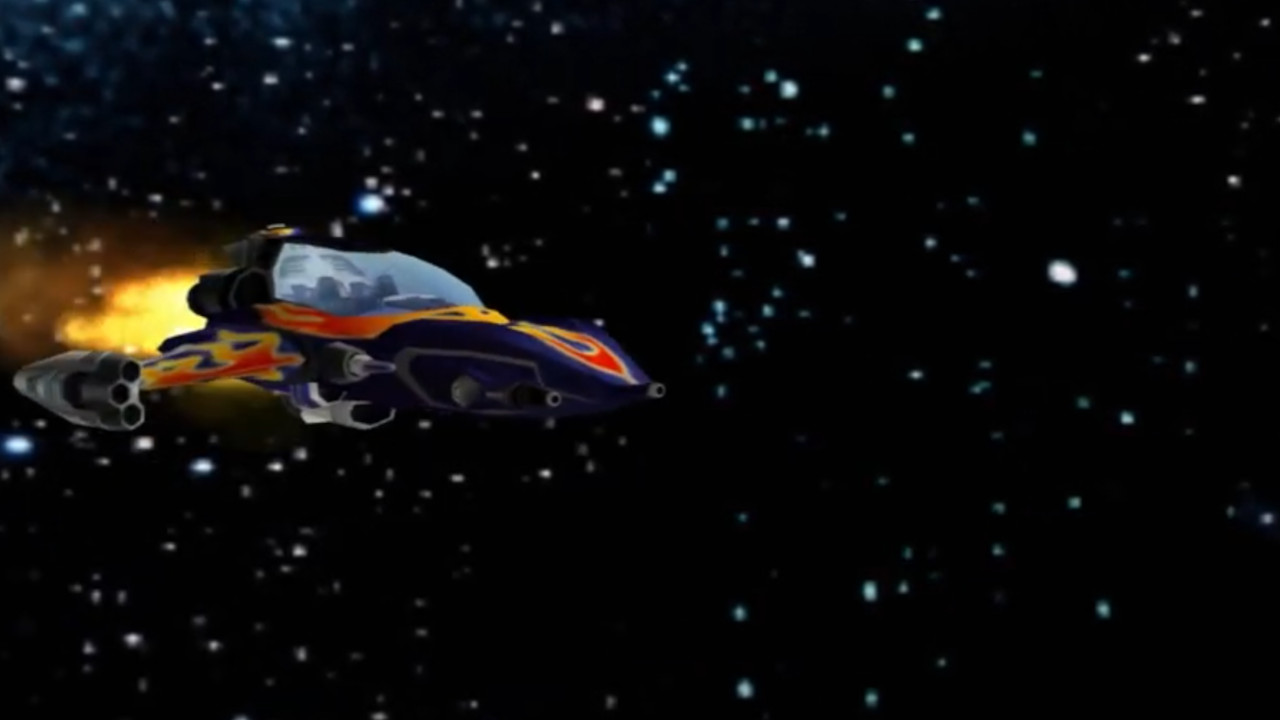Video games are games, they are fictional worlds all put into a disc for us to explore and enjoy. And with that comes the confines and restrictions to being a video game that we just have to deal with. One of these problems being the classic loading screen.
There’s a lot of history around the loading screen and how developers attempt to not have you staring at the void for too long. Games get around this in many ways, with a long history of mini-games to keep our monkey gamer brains entertained. It was somehow so competitive to keep people entertained that Bandai Namco filed a patent on loading screen mini-games back in 1995 that expired in 2015. Since 1995 however, it would be a bit of a hot-take to say loading screens and tricks developers utilize haven’t evolved, and so, it’d be fun to dive into these multiple tricks that developers are using for loading screens specifically for immersion.
Sure in the old days of 2004, you could play Galaga on Tekken 5 to keep yourself entertained, but it still pulled you out of the game itself to get you there. So how do you keep up player retention while also keeping immersion in line? That is what I want to focus on, with a look at different methods developers have integrated to keep us engaged.

Cinematic loading screens – The weird world of ships flying through space
Simple strategy. I’m just talking about a loading screen that hides itself behind repeating animations. Something I have found rather interesting and will use as examples of this type of loading screen is with the repeated use of space ships traveling. It might sound bizarre but it just feels like an odd trend to notice throughout the past 20 years of games.
Early example and a strong contender for being a possible trendsetter is the first Ratchet and Clank on PS2. Loading times were somewhat lengthy (especially if you were a poor soul with a scratched disc) and so you would get to see the games ship flying around the planets, giving you a leisurely view of space. The animations looped and repeated and I’m sure now would get boring rather quickly, but to kids who would have loved the original, this seemed seamless, like the loading screen was just part of the game. This type of immersion keeping is a good head start and showcase of the type of thing I want and enjoy. I do not need a loading screen to be interactive or fun; it simply needs to keep me in the game world.
Other games that follow through with this ideology are Destiny 2, Warframe, No Man’s Sky, and even Helldivers 2 (although I will admit that one is a stretch). Although, a lot of these games take the more hyperspace-esque vibe with ships flying through corridors of bright light. And to me, that just feels a bit like grabbing at a low hanging fruit, Ratchet and Clank made an effort for the loading screen to be aesthetic with different arcs of travel coming in and out of the screen giving it a lot more charm.
Warframe does crossover into our next category with the loading screen being somewhat interactive. In this loading screen you could move your ship up or down, or hit the breaks and release its wing flaps. I think what makes this shine is with player freedom and expression. When your ship moved if you were in an online lobby the other players could also see it move, whatever design or color your ship was others could see it during the loading screen. It gives a unique twist which works very well or an online space game, it keeps player attention by being a little silly, but also grounds it all into the game world so it stays immersive. Destiny 2 also keeps your spaceship appearance coherent with online lobbies, so the player expression also gets credited there, but it doesn’t let you move your spaceship around.
Interactive and hidden loading screens – keeping up gameplay
Throughout gaming, there have been many cases of loading screens having engagement to keep the player playing, but as stated earlier, this is not the purpose I am looking for today. I want loading screens that are canonical to the game’s setting, ones that fit into the lore and world. Interactive loading screens when used well can fit this requirement amazingly.
Assassin’s Creed takes a unique strategy with it, having the player run through a “memory corridor.” Some would say it’s a bit boring, definitely not as interactive as a mini-game but it solves different problems — cute details like this give games so much more charm to me. In these loading screens all you could do is run around or swing a weapon, yet it has become a sort of tradition throughout the series with only a select few not letting you do so. It has become a bit of an identity for the games personally. I love it, the use of the memory corridor works well with the loading screen. You’re quite literally inside a lore built loading screen that is happening not just for you but also the in game world. A similar example would be the combo practice loading screen of Bayonetta, however the purpose there is more for the player to have a chance learning the game and it’s combos rather than keeping the player in an immersive headspace.
Hidden loading screens, however, are loading screens that attempt to hide themselves from the player all in an attempt to keep things seamless. Dori Arazi, the director of cinematography for God of War, explained the game to be a challenge because he wanted the entire game to be a single take.
“When you combine a sense of documentary with a camera that doesn’t cut, you get a very empathetic point of view to the character. It’s such an immersive way to experience the hero’s journey.”
The game, of course, still has loading screens, but instead by working together with level designers, developers can narrow the player into a corridor, ladder, or rock to duck under and disguise the loading screen there. The use of hidden loading screens isn’t new but God of War is one of the more iconic uses with it because of the strong consistency and focus on storytelling. Even fast travel doesn’t load with a system done similar to the Assassin Creed’s loading screen being put in place.
Some of the earlier uses of hidden loading screens would keep the player stationary with things such as elevators, examples of this being Mass Effect and Mirror’s Edge. With technology becoming more powerful and loading screens becoming shorter the use of hidden loading is becoming more commonplace and I am glad for it. I personally think this method is the best for immersion and gameplay. The most modern example would be with Monster Hunter Wilds, where you can seamlessly travel across the different regions through long gorgeous corridors to give your device time to load the next scene

Final thoughts
While there are many other loading screens I could possibly go over; cinematic, hidden, and interactive are the only ones I would contribute to doing a service to the evolution of immersion. Dare I be so bold to say it, but I don’t think the classic tips and lore loading screens of games like Skryim are exactly exciting. Overall, I just love these niche ideas and strategies developers use to tackle problems that at first are not considered too much. I love these small creative decisions like what type of loading screen to use and why a game might pick it. While I love the hidden loading screen, I definitely wouldn’t want every game under the sun to integrate it in.
I’m excited to see this hobby continue to evolve.








